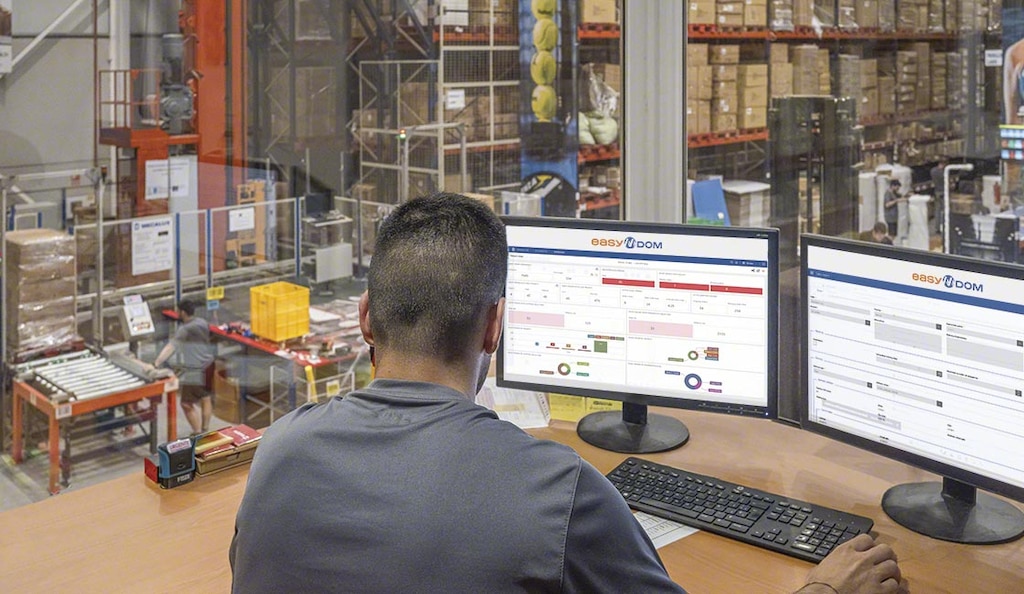
Route planning and applications in logistics
Route planning is a crucial strategy for companies dedicated to the distribution of goods and last-mile delivery.
What is logistics route planning?
Route planning consists of calculating the route that a vehicle or other form of transportation should travel to make specific stops in the fastest, safest, and most cost-effective way. Typically, logistics companies use software to generate the maps to be used by carriers.
To find the most suitable route to deliver goods to customers, a series of fundamental transportation-related variables are considered. These include delivery windows, vehicle capacity, service time, and the number of orders to be completed during the day. Although it’s increasingly linked to technology, distribution route planning has been studied for decades and is closely related to the traveling salesman problem.

Benefits of route planning in logistics
Applying resources and paying attention to logistics route optimization offers multiple advantages to companies. Here are some of them:
- Lower carrying costs. Collecting information on elements like tolls in delivery areas, vehicle fuel consumption, and wear and tear helps keep these costs in check.
- Competitive lead times. Automating route planning enables drivers to focus on their task and begin their journeys as soon as possible. Thus, deliveries are completed in shorter timeframes, which increases the level of employee and customer satisfaction, the chances of a repeat purchase, and profitability.
- Risk prevention. Using GPS navigation data and drivers’ prior experience not only helps to identify fast and efficient routes but also ensures the safety and security of loads and employees.
- Cuts in emissions. Minimizing unnecessary travel and traffic jams by choosing the best routes, using electric and non-polluting vehicles, and respecting restricted traffic zones reduces particle emissions and protects the planet.
What is the best way to plan a logistic route?
Before planning your company’s routes, it’s important to consider a series of data closely related to these trips:
- Inventory. Having a real-time view of your available resources increases your ability to adapt and make adjustments in the event of changes in demand or disruptions. Programs such as the Easy DOM distributed order management system centralize supply chain management and allow for monitoring orders and incidents.
- Order routing. Setting preferences for shipping items from one distribution center/warehouse or another helps guarantee that deliveries are made as quickly as possible and lowers operating costs. This is another advantage of DOM software.
- Conditions on existing routes. It’s essential to be aware of issues such as possible access restrictions, the presence of tolls on delivery routes, and more temporary aspects such as weather conditions.
- Delivery addresses and their order. Establishing the route to follow before loading the vehicle facilitates better organization of the goods inside it. The Easy WMS warehouse management system, for instance, groups pallets depending on whether they correspond to the same order or route to streamline the distribution of the load in the trucks or vans.
- Total travel time. In addition to the transit time, a few additional minutes should be considered for loading or unloading at each stop. Likewise, in last-mile logistics, a time slot should be reserved for interacting with the customer.
- Available vehicles. Knowing how many vehicles are available and monitoring their movements at warehouse access points provides an advantage in ensuring on-time order deliveries. For this purpose, modules such as Yard Management System (YMS) can be used. This application shows logistics directors comprehensive goods-in/goods-out information and synchronizes operations at the loading docks.
- Customer experience. The goal is to coordinate with customers to deliver parcels as quickly as possible, which increases satisfaction with the service.

The future of route planning
The latest technological advances are driving the evolution of route planning systems through innovative developments:
- Industrial Internet of Things (IIoT). Using IoT devices to stream live data to route planning software enables logistics networks to obtain reliable information on the status of vehicles and delivery routes.
- Artificial intelligence (AI) and machine learning. Future route planning will be based on tools that can learn from experience and, for example, predict traffic in an area or carry out predictive maintenance.
- Advanced analytics. Collecting all these data and generating accurate statistics from them helps fine-tune logistics operations, from fleet configuration to more specific aspects such as delivery schedules.
Achieve real-time visibility of your logistics operations with Interlake Mecalux
Are you looking to carefully configure order assignments and gain global visibility of inventory across your warehouses, stores, and shipping nodes? At Interlake Mecalux, we can help you automate your omnichannel distribution. Easy DOM allows you to segment shipments by customer type and create specific ranking rules, making it ideal for any organization with more than one associated warehouse, store, or 3PL manager. In addition, it integrates with ERP, WMS, and third-party software for company-wide coordination. Contact us, and we’ll inform you obligation-free about this and other logistics and storage solutions.
